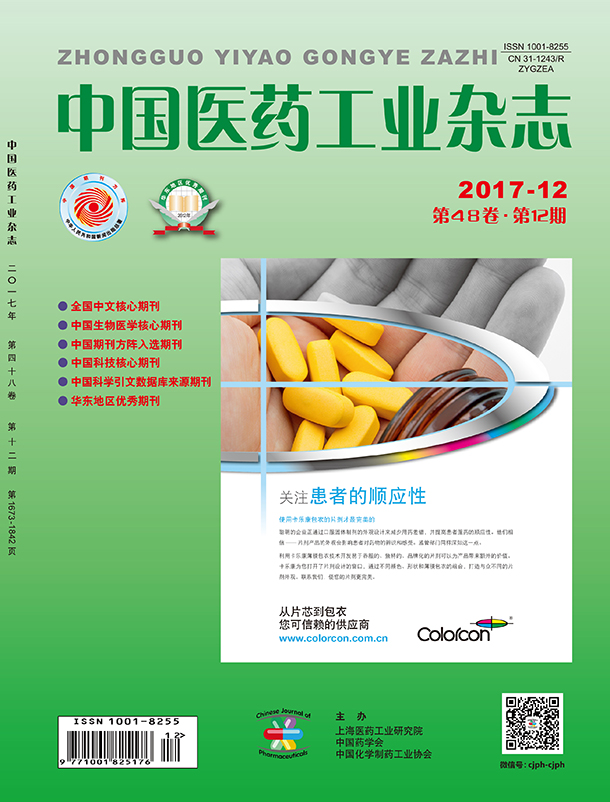XU Wenqi1,2, ZANG Yue1,2, WANG Sheng1,2, MEI Qibing1,2,3, LIU Li1,2,3*
This paper was aimed to explore the protective effect of the phosphoesterase complex entericcoated tablets (1) on alcoholic fatty liver disease (AFLD). Sixty Wistar rats after surgery treatment of intestinal fistula were randomly divided into six groups of 10 rats each group: normal group, blank control group, model group, 1 (30,60 mg/kg) groups and the polyene phosphatidylcholine capsules (140 mg/kg) group. The AFLD rat model was established by feeding Lieber-DeCarli liquid diet containing ethanol for 6 weeks with continuous administration for 6 weeks. Alanine aminotransferase (ALT), aspartate aminotransferase (AST), alkaline phosphatase (ALP), total cholesterol (TC), low density lipoprotein-cholesterol (LDL-C) in serum and malondialdehyde (MDA), total superoxide dismutase (T-SOD), glutathione peroxidase (GSH-PX) in liver tissue were measured, respectively. The expressions of fat metabolism-related genes were evaluated by real-time quantitative PCR. Oxidative stress parameters including mitochondrial viability and mitochondrial reactive oxygen species (ROS) accumulation were detected. Hepatocyte apoptosis was determined by Tunel staining and the expressions of apoptosis-related proteins, such as caspase-7, cleaved caspase-3, cleaved caspase-9 and Bcl-2 were assessed by Western Blot. Our results showed that serum AST, TC and LDL-C levels were lowered by 1 of 30 mg/kg, while TC level was lowered by 1 of 60 mg/kg, compared to those of the model group. Hepatic histopathology showed that 1 was effective in reducing hepatic fat deposition. 1 treatment downregulated the expression of fatty acid synthase (FAS), glycerol-3-phosphate acyltransferase 1(GPAT1) and sterol regulatory element binding protein 1c (SREBP-1c). In addition, 1 could dramatically alleviate oxidative stress by elevating T-SOD, GSH-PX and mitochondrial viability in hepatocytes, moreover, 1 of 30 mg/kg could also decrease MDA and mitochondrial ROS accumulation. Finally, 1 of 30 mg/kg remarkably suppressed hepatocyte apoptosis. These findings suggested that 1 exerted a protective effect on AFLD through inhibiting oxidative stress and apoptosis in hepatocytes.
